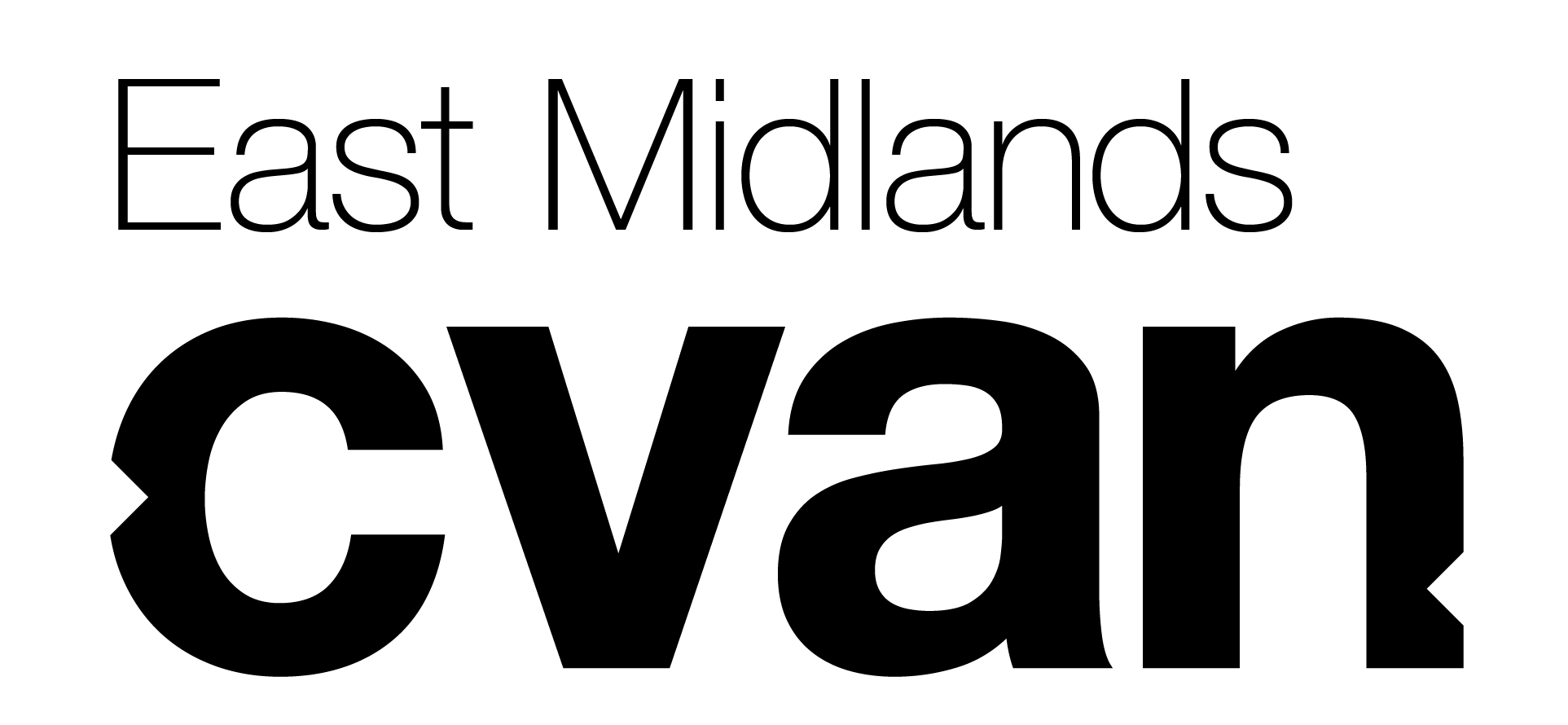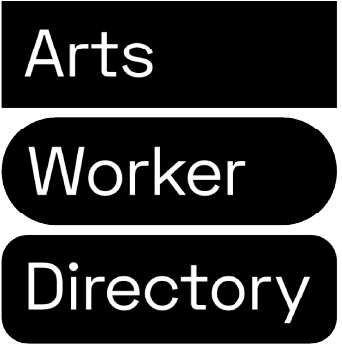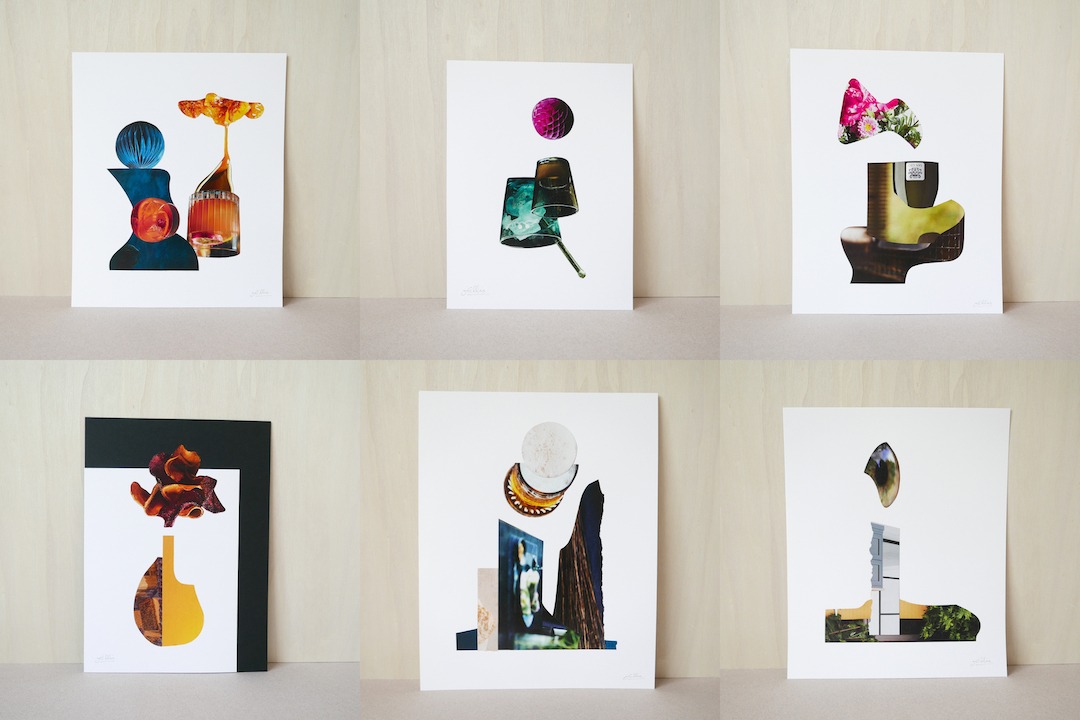Find out more about James’ practice on his website and follow him on Instagram.
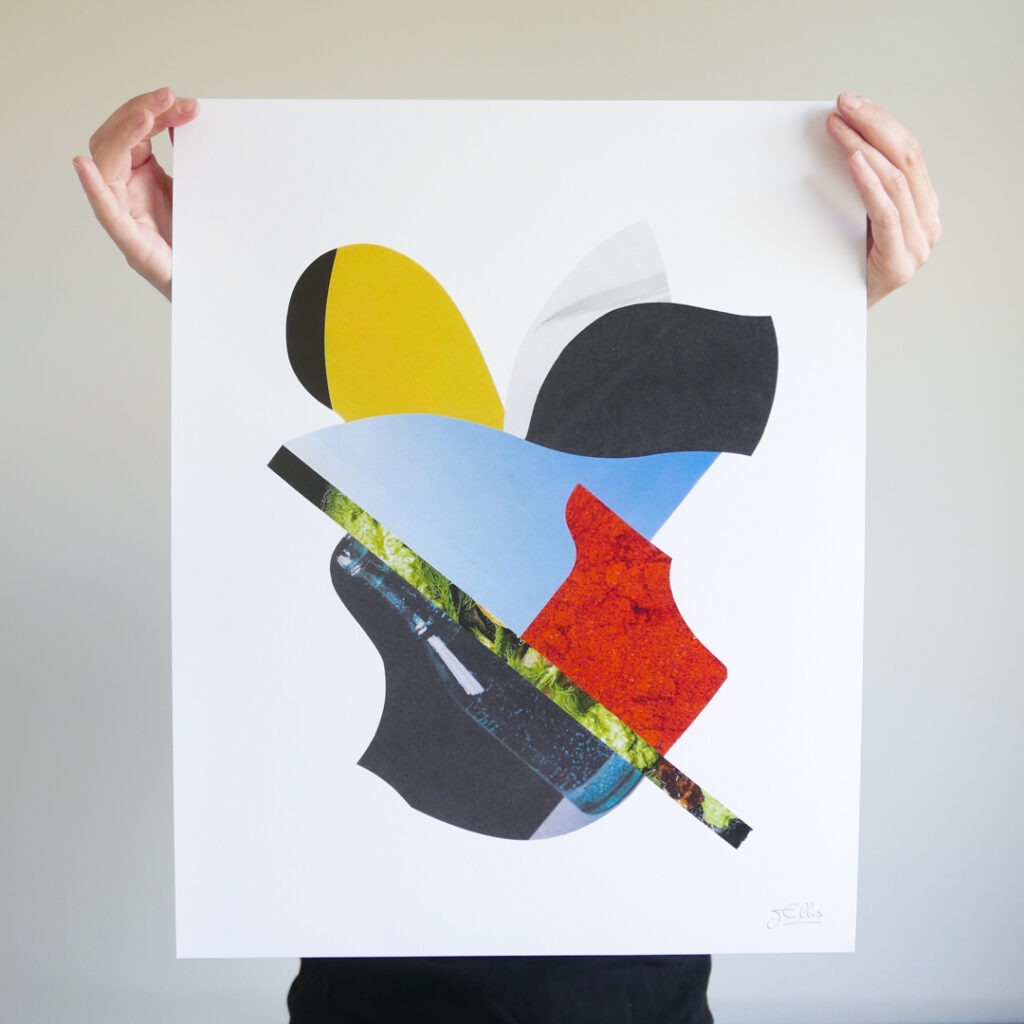
Where are you based?
I live and work in Empingham, a small village in Rutland next to the beautiful Rutland Water.
Describe your practice for us
As a collage artist, I create colourful compositions and large-scale murals from hand cut paper. My goal is to create a fantastic, imaginary world, which allows the viewer to step out of ordinary life and gain a new perspective. I believe that being transported like this can empower us to make better decisions for our lives and for our future.
I begin each collage without a specific idea in mind, leaving room for chance to play its part in the creative process. For me, the real magic is in creating something I’ve never seen before, and this process allows me to make things that are completely new and unexpected.
Balance is also a vital aspect of my work. It is not only beautiful, but also an effective tool that enables me to create surreal worlds that still feel comfortable and familiar.
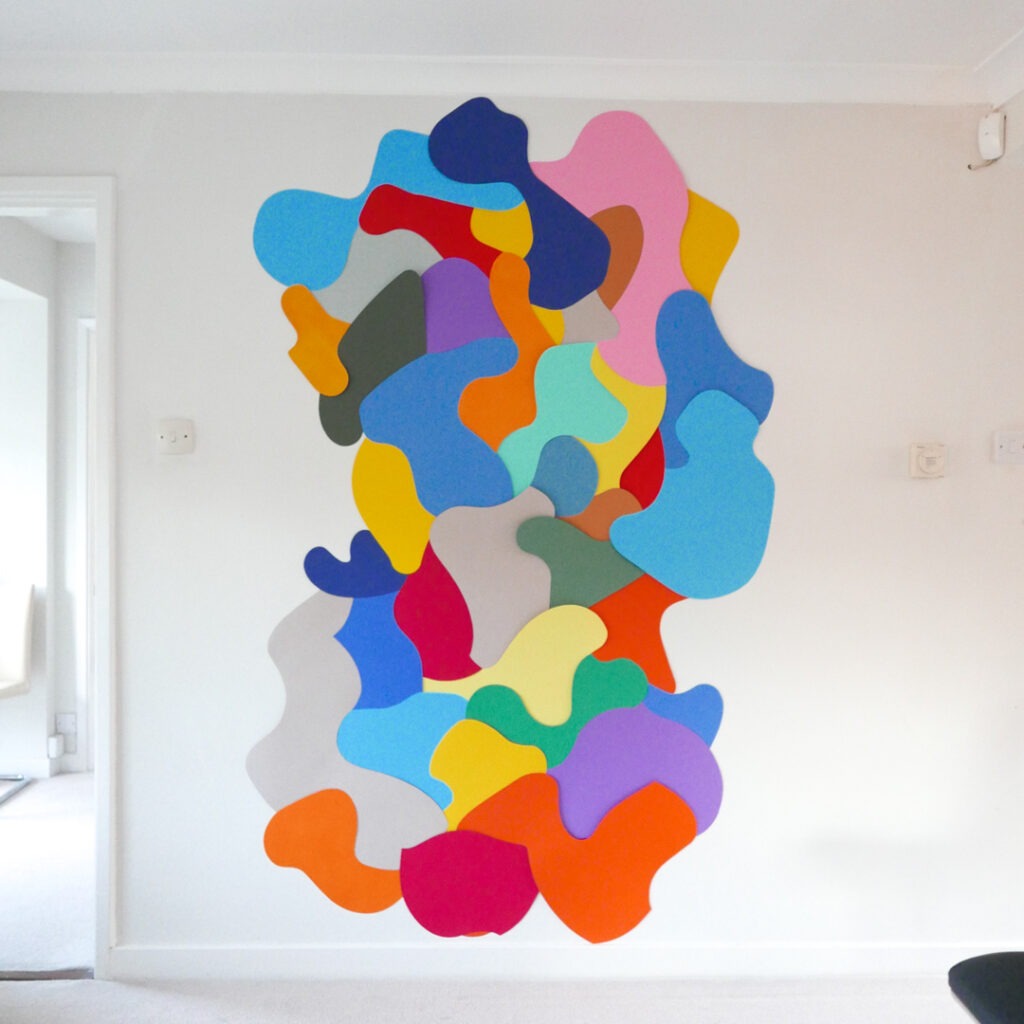
How long have you been practising and by what route did you come to your practice?
I’ve always made art, but my practice really took off in January last year when I discovered the magic of collage. With this technique, I have finally been able to create art that expresses my vision.
Getting here was no easy journey! I always knew that I wanted to work in a creative field, but I didn’t know exactly what I was looking for. I started out studying Fashion Design in Paris, which seemed like the most concrete creative field to explore. It also looked like a reliable route to ensure support from my family – everyone needs clothes, right? With this experience, I was able to travel abroad for internships and finally settle in the UK, where I could sort out my English through working in the clothing industry. While this was beneficial for my language skills, I never felt compelled to continue with fashion design, I found it too restrictive.
The years that followed involved a slow and often frustrating journey of self-discovery. I travelled a lot trying to make sense of it all and learned a lot about myself and what I wanted in this time. I took every opportunity to experiment with new artistic techniques until I could finally find a way to express myself freely and creatively.
The challenges of 2020 have had a surprisingly positive impact on my career by cutting off all my sources of income. Even if I couldn’t guarantee success in my art career, I could finally justify giving it all the time it deserved!
Tell us more about the element of chance or the intuition, that underpins the cutting process? Does this apply, regardless of the size of the work or whether it’s intended for interior display or for public installation?
Chance is a hugely important element in my process as it allows me to create outside of my own experience, simply letting my physical response guide me. I can then create art that is not limited by culture, religion or social class. The work goes beyond these frontiers and allows viewers to engage simply through feeling, something that we all have in common.
The cutting process is completely free of restraints, and I love this playfulness and flexibility. It was challenging at first to cut freely on a larger scale, but when I convinced myself to just go for it, I found the magic was there too.
So yes, I would always apply this process regardless of the size or purpose of my work.
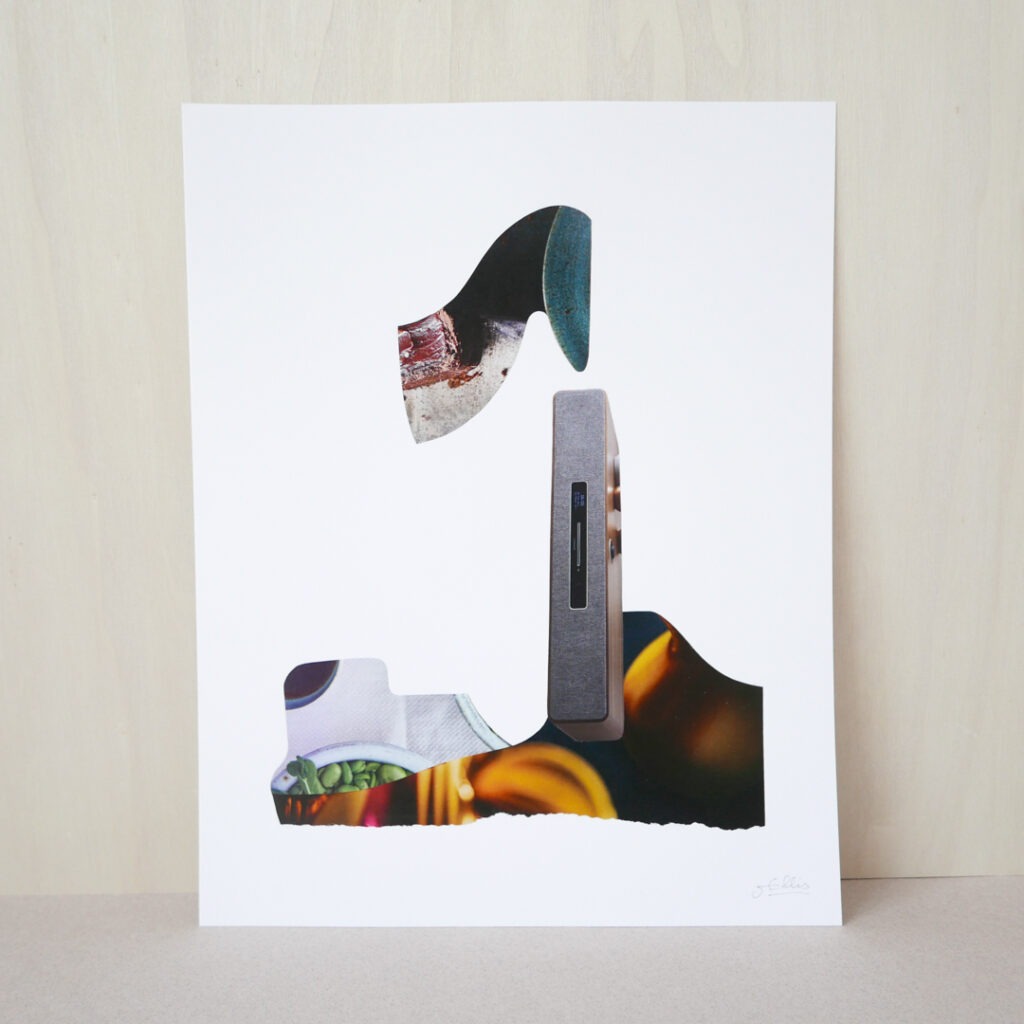
A strong sense of interest in your viewer and their experience of your work comes through in how you talk about it. Have you purposefully sought out an unfettered process or is that something that has revealed itself as your work has developed?
Whilst I always had a clear feeling of what I was trying to achieve through art, I didn’t ever purposefully seek out an unfettered process, only because I didn’t realise this was the missing element until I experienced it.
My interest was always in the physical response to an artwork rather than its representation. It just wasn’t easy to find a process that would allow discussion between what I see and what I feel, with the flexibility to maintain balance in the composition.
I actually started using collage whilst doing other work that didn’t require my full attention. By doing something else at the same time, I was really able to let go of control in the process – it was really liberating! Ultimately, it feels more like the process found me than the other way round!
Your work seems a balm for our times, encouraging a “sense of relief and freedom” and providing a “place of comfort”. How do you achieve a balance between the familiar and the otherworldly?
That’s an interesting question – my initial response is to say that it comes naturally, as I know I couldn’t be satisfied without this balance in my artwork. Thinking more about it though, I’d say that there are two elements at play in finding this balance.
The first is during the cutting stage before composing the artworks. Although I like cutting in an intuitive way, I think the shapes I create are influenced by the natural world. I can always find peace in nature and I look to recreate this feeling in my work. So despite the abstract nature of the shapes, the familiarity of our environment always leaks in.
The second element comes into play when I am composing the artwork. Although my main focus is on the balance between all aspects of the composition, I can’t be satisfied if I don’t see something familiar in the work, no matter how remotely realistic or abstract it appears.
The combination of these two elements help bring familiarity to the abstract world I create.

What is important to you in maintaining and motivating your practice?
I think we all create because of a desire to share and interact with others. Getting feedback about my work is really important to me in staying motivated, as nothing really makes sense without a human connection. Especially as an artist, I think it’s very easy to get stuck in the studio and forgo this important aspect of your work.
What have been your biggest achievements since establishing your practice?
The opening of ‘Red + Green = Yellow’ at The NewBridge Gallery in Gateshead, my first exhibition, was really exciting. Seeing my work in an art gallery for the first time, alongside the work of other artists, really made it real. I don’t think there is anything more rewarding for an artist than to be given this kind of opportunity, and to know that people trust you and are interested in what you have to share.

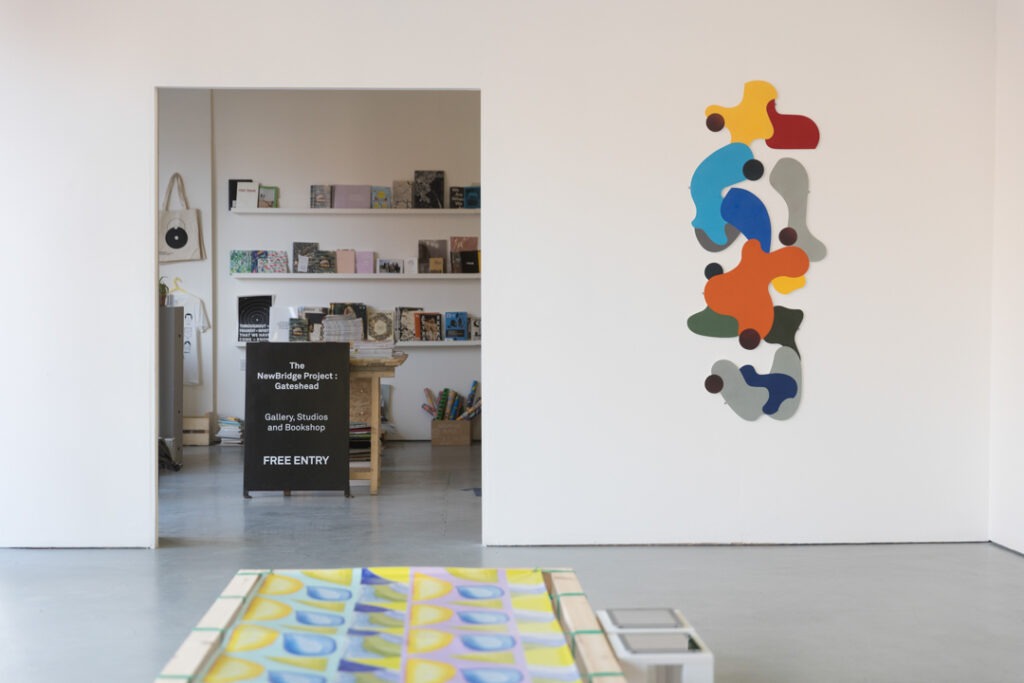
What have been the biggest challenges to your practice?
As a self-taught artist, I have devoted a lot of time to working out all the little details that make an artwork professional and determine whether it is ready to be exhibited. No matter which technique you use, I have realised that being an artist is mostly about becoming a craftsman. There are countless decisions to be made and it has been really challenging finding the best way to create professional, archival work without compromising the growth and development of my practice.
What is the most interesting or inspiring thing you’ve seen or attended recently?
I had the opportunity to experience Geoff Diego Litherland’s solo exhibition at Haarlem Artspace late last year. I was inspired watching the video of his three-year journey, in which he committed to making his own canvases from scratch. He planted, grew and harvested flax by hand, then went through the incredibly laborious process of making the flax into thread and weaving it together to make canvases – which were artworks in their own right!
It was really fascinating to see the whole process and the commitment that was required to do this. The video made me appreciate the extraordinary time it takes to use these artisan techniques, and the value and satisfaction that can be found in slow craft in a fast-paced world. I also have a new level of appreciation for all the objects that exist in my day-to-day life. It’s helped me to reconnect with where everything actually comes from: nature.
The resulting canvases that Geoff made were beautiful, weaved with intricate patterns before being painted. I really like this idea of a two-layer creative process where you start by designing your own support – it brings a whole new world of possibilities and depth to the work!
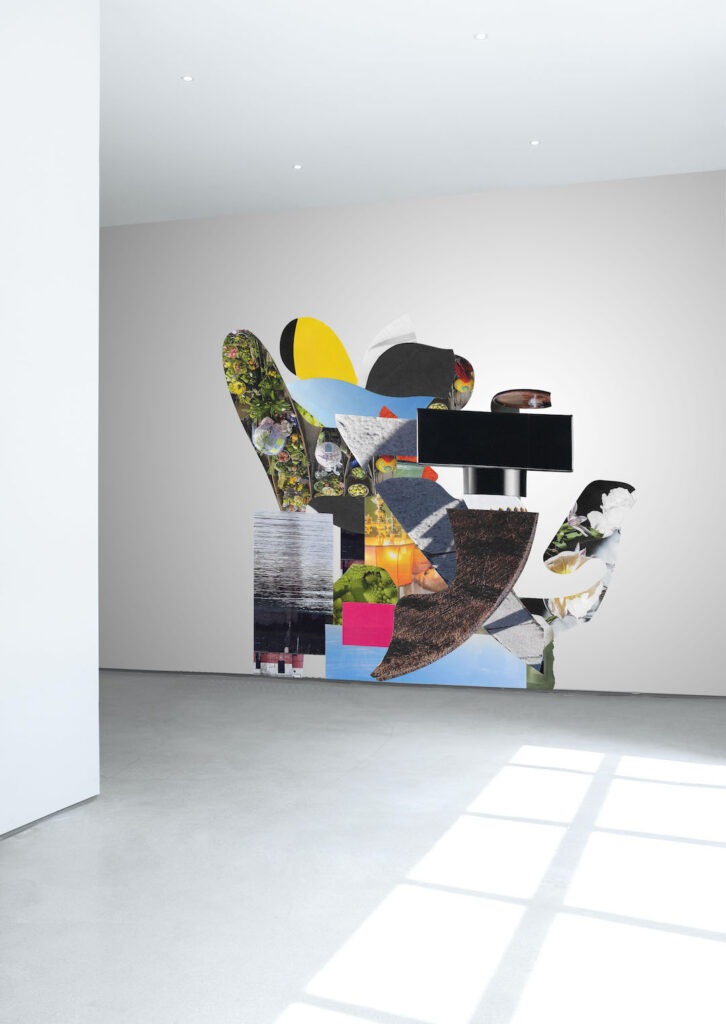
Which other artists’ work do you admire, and why?
The work of Henri Matisse and Jean Arp really resonate with me – I can never decide which artist is my favourite!
There is so much magic in Matisse’s later works, in his colourful, playful collages that all burst with life. They completely transport you to a dreamlike natural world; a peaceful place not unlike reality and yet completely surreal. Jean Arp’s work is like poetry to me. Always so delicate, balanced and totally mesmerising. You’re never certain what you’re looking at, and yet I always feel so comfortable and at home with his work.
The contemporary artist Paul Kremer also really inspires me with his colourful and minimalist work. I love his use of flat, bold colours and find his abstract, edging on figurative, style delicious!
Where do you see your work in the next 5 years?
I’m really enjoying developing the fantastical aspect of my work. The more I build my body of work, the more I’m seeing this whole world unfold. Animating my artworks is something I’m starting to explore now, as I would really love to bring this world to life.
I love the concept of open calls, the doors they open and the unexpected opportunities they bring. I think I’d like to continue getting involved in this way, taking these chances to travel and meet other artists or collaborators.
It would be wonderful to see my work represented in national and international galleries in the coming years, but most of all, just being able to continue enjoying my process and keeping the magic alive in my work, that would be the greatest achievement for me.

Who would you most like to have visit your studio?
My late grandmother. She was the only person in my family who had the same passion for creative endeavours as me. I always shared my latest creations with her but sadly, never had the chance to invite her to my studio and show her the work that means the most to me – I’m sure she would have appreciated it.
Where can we see your work? Do you have any upcoming exhibitions, events or projects?
At the moment, for every exhibition confirmed, another is cancelled! There’s a lot going on online, but I’m not drawn to these kind of events – I think you lose a lot of the magic when you can’t physically experience an artwork.
I’m hoping that the exhibition ‘Red + Green = Yellow’ at the NewBridge Gallery will be able to open again soon. Two of my artworks are being exhibited there thanks to Jenny McNamara’s ingenious open call, where each artist was commissioned to make an artwork in response to another artist’s work, without knowing anything about their practice!
A lot of my upcoming events are on hold at the moment, so the best place to find out up to date information about my exhibitions is on social media which I update regularly. You can also see all my latest work on my website.
It feels a bit like we’re all holding our breath at the moment but I’m sure the future is bright and there is plenty more magic to come!
James was interviewed in January 2021.
All images are by and courtesy of the artist.
